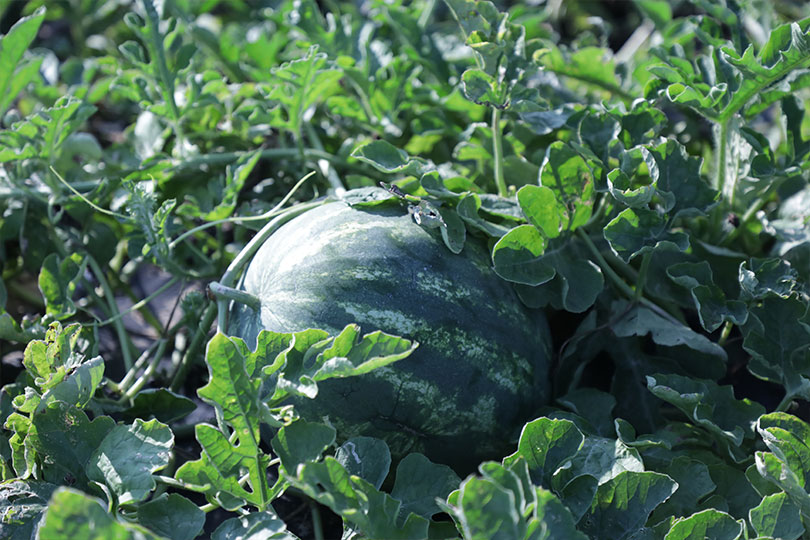By Shelby Shank
Field Editor
Students across the Lone Star State learned about watermelons through Texas Farm Bureau’s (TFB) Farm From School program.
Kindergarten through fifth-grade students across Texas virtually “meet” with a farmer or rancher once a month through Farm From School on a video conferencing app.
This month, Will Beckwith, a farmer in the Rio Grande Valley, taught students all about growing watermelons.
“Students across the state tuned into our last Farm From School visit of this semester to learn about growing and harvesting watermelons,” said Jordan Bartels, TFB associate director of Organization Division, Educational Outreach. “Students asked Will many questions about growing and picking watermelons.”
During the 30-minute virtual session, Beckwith discussed how watermelons are grown, the different varieties of watermelons on his farm and taught students how to pick the best watermelon.
Beckwith grows 200 acres of watermelons—both seedless and seeded. That is roughly 2,500 watermelons per acre.
Before the watermelons are planted in the ground, they are first grown in a temperature-controlled greenhouse from seed. The plants are in the greenhouse for 45 days until they reach a size where they can be transplanted into the ground.
“Before we plant the watermelons in the ground, we need to prepare the soil. We lay down our irrigation pipes for the watermelons to get water,” Beckwith said. “Then, we put plastic mulch down over the soil beds to protect the soil and conserve as much water as we can.”
Watermelons can get waterlogged if they are planted in soil that doesn’t drain well. This is when the ground cannot absorb any more water and a layer of water remains on the surface. Watermelons grow best in a sandy type of soil that drains water easily.
Once the soil is ready for planting, each plant is placed by hand in the ground every three feet.
“Watermelons grow like crazy and can absorb up to half a pound to a pound of water a day,” Beckwith told the students.
When watermelons have reached their full maturity and are ready to be harvested, light stripes will form on the outside of the melon.
A yellow belly or a yellow stain on a watermelon will also indicate it is mature.
“By the time watermelons are ready to be harvested, they will be 13 to 14 pounds,” Beckwith said. “You’ll know they are ready to be picked when they have a nice yellow belly on the bottom, and if you tap it, you can hear the water inside of the watermelon.”
Planting and harvesting watermelons is a labor-intensive process. Similar to how watermelons are planted by hand, they are also picked by hand and taken to a packing shed to be placed in cardboard bins that are sent to the grocery store.
However, not all watermelons make it to the store. If the melon has any cosmetic damages, like wind scaring, Beckwith will keep it behind and sell it.
Beckwith has been growing watermelons for six years and his family has been growing them for 80 years.
“My favorite part about being a watermelon farmer is being able to be outside every day and working with a crop that grows so fast,” Beckwith said. “The work never ends, and it’s fun to do something different each day. You see growth in the crop and how it goes from a seed to something people enjoy.”
More information about Farm From School
This semester, students also learned about farm equipment, bison and strawberries.
The popular program will be back again this fall. Sign up for the fall 2024 program will open later this summer.
Click here for more information about the Farm From School program.
Visit texasfarmbureau.org/aitc for more information and the latest announcements on TFB’s Ag in the Classroom activities.


Leave A Comment